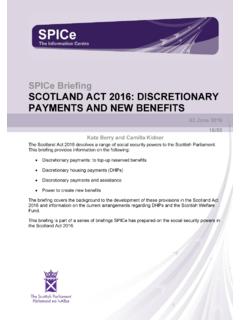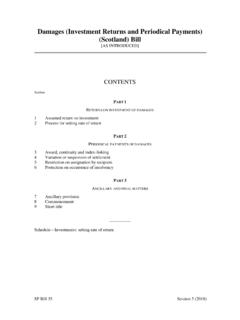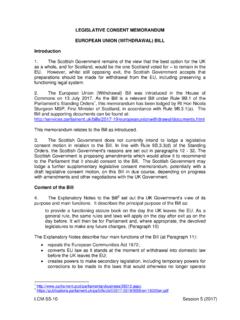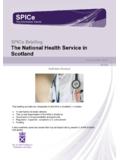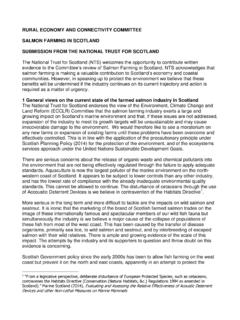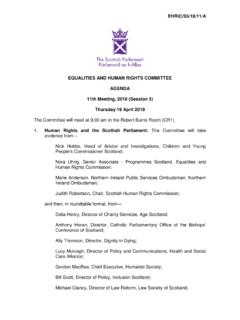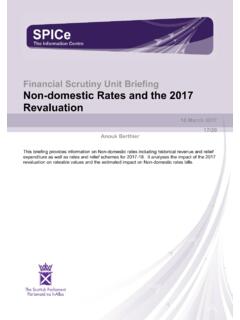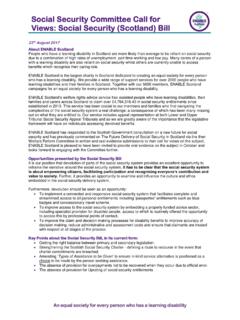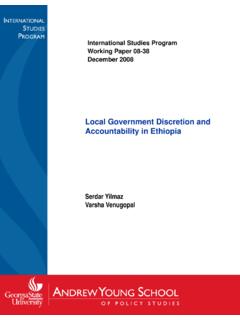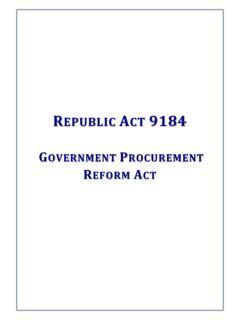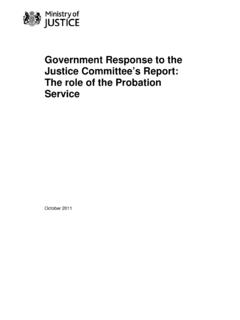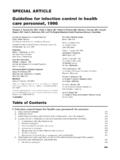Transcription of By Local Authority Population level - 2015
1 The Sc ot tish Parliament and Scottis h Parliament I nf or mation C entre l ogos . Financial Scrutiny Unit Briefing Subject profile Local government in Scotland 23 August 2016 16/69 Allan Campbell and Evie Burrowes This subject profile provides an introduction to Local government in Scotland, including information on the organisation and functions of Local authorities, Local government finance, and potential future developments in this parliamentary session. Population level - 2015By Local AuthorityBetween 21,670 and 51,360 Between 51,360 and 136,130 Between 136,130 and 261,960 Between 261,960 and 606,340 2 CONTENTS EXECUTIVE SUMMARY.
2 3 ORGANISATION .. 4 STRUCTURE .. 4 HISTORY AND LEGISLATIVE BASIS .. 4 Local Authority Population .. 4 Local Authority DECISION MAKING .. 7 7 ROLE OF COUNCILLORS .. 7 Local government REPRESENTATION .. 8 MULTI WARD SYSTEM .. 9 Local Authority 9 POWERS AND FUNCTIONS .. 10 AREAS OF RESPONSIBILITY .. 10 TYPES OF POWERS .. 11 PARTNERSHIPS AND COMMUNITY PLANNING .. 12 Community planning .. 12 Arm s Length External Organisations .. 13 Integration of health and social care .. 13 FINANCE .. 13 FUNDING 13 Revenue .. 13 Capital and borrowing .. 14 Allocation process .. 14 COUNCIL TAX .. 15 ANNEX .. 17 TABLE 1: Population BY COUNCIL, 2015 .. 17 TABLE 2: TOTAL Local government EMPLOYED, EXCLUDING POLICE AND FIRE.
3 18 SOURCES .. 20 RELATED BRIEFINGS .. 22 3 EXECUTIVE SUMMARY Local government in Scotland is made up of 32 unitary Local authorities. Although the powers of Local authorities have been reformed in recent years, this structure has remained unchanged since 1996. This briefing provides information on: the history and legislative basis of Local government Population of Scottish Local authorities how Local authorities make decisions the role of councillors the role of COSLA and the Scottish Local government Partnership how the multi-ward system works figures on Local Authority employment powers and functions of Local authorities partnerships and community planning how Local authorities are funded plans to reform the council tax.
4 4 ORGANISATION STRUCTURE Local government in Scotland is made up of 32 Local authorities. Each Local Authority represents a geographical region in Scotland and is responsible for providing a range of public services for the Local Population . Councillors are elected to Local authorities by the electorate of the area they represent (known as a council ward). Local government elections are generally held every 4 years, with the exception of three 5-year terms (2007-2012, 2012-2017 and 2017-2022) to avoid Local government and Scottish government elections occurring in the same year. HISTORY AND LEGISLATIVE BASIS The current structure of Local government is based on the Local government etc (Scotland) Act 1994.
5 Prior to this, Local government had gone through a number of significant changes to its structure and powers. From 1889 through to 1975 (subject to a number of minor reforms), there were 37 counties covering Scotland, including counties of city comprising each of the four major cities. The counties were all-purpose authorities responsible for a wide range of services. Outside the counties of city, the counties contained 21 large burghs, which had a wide range of functions and were generally independent of the counties, and 176 small burghs which had limited powers including housing, but were generally serviced by the counties, although independent of them.
6 The remaining area of the counties was divided into 196 districts with very limited powers (also known as landward districts). During the 1960s, there was a widespread recognition that the structure of Local government needed reform. The Royal Commission on Local government in Scotland, chaired by Lord Wheatley, published its report in 1969. The Wheatley Commission outlined a two-tier structure. The Commission s proposals were introduced by the Local government (Scotland) Act 1973, which created nine Regions, 53 Districts and three Island Areas and removed all previous burghs and landward districts. The new structure came into effect in 1975.
7 The Local government etc. (Scotland) Act 1994 removed the 9 Regions and 53 Districts, and 29 single-tier bodies were created. The 3 Island Areas (Orkney, Shetland and Eilean Siar) still exist (Scottish government 2015b). Local Authority Population Local authorities in Scotland differ significantly in terms of Population size, ranging from 21,670 in Orkney to 606,340 in Glasgow. The average Population size of a council in Scotland is 167,906 (National Records of Scotland 2015). Figures 1 and 2 below show the Population of all 32 Local authorities. 5 Figure 1: Scottish Local authorities 2015 Population Source: National Records of Scotland 2015, Data in Annex Table 1.
8 606,340498,810368,080338,260316,230261,9 60234,110230,350178,550174,560158,460149 ,930149,670148,210136,130122,060116,9001 14,030112,400106,960103,05095,51092,9409 2,83089,59087,39086,89079,50051,36027,07 023,20021,670 Glasgow CityEdinburghFifeNorth LanarkshireSouth LanarkshireAberdeenshireHighlandAberdeen CityWest LothianRenfrewshireFalkirkPerth & KinrossDumfries & GallowayDundee CityNorth AyrshireEast AyrshireAngusScottish BordersSouth AyrshireEast DunbartonshireEast LothianMorayEast RenfrewshireStirlingWest DunbartonshireMidlothianArgyll & ButeInverclydeClackmannanshireEilean SiarShetland IslandsOrkney Islands 6 Figure 2: Scottish Local authorities 2015 Population - map Population level - 2015By Local AuthorityBetween 21,670 and 51,360 Between 51,360 and 136,130 Between 136,130 and 261,960 Between 261,960 and 606,340 7 Local Authority DECISION MAKING Local councils in Scotland are led by the Leader of the council and a civic leader (Provost or Convenor) is elected by the Local Authority .
9 The civic leader is known as the Lord Provost in Glasgow, Edinburgh, Aberdeen and Dundee. Committees are formed as a result of the full council meeting of the Local Authority . The full council meeting is the governing body of the Local Authority , where all councillors meet to debate and take the key decisions of the Authority . This involves the election of the Leader and civic leader. Some Local government decisions can only be made by the full council. These include setting the annual budget and council tax, electing the convenor and deputy convenor and appointing councillors to committees. Local government decision making is exercised predominantly via committees and sub-committees.
10 The Local government (Scotland) Act 1973 permitted authorities to delegate the decision making process to committees and sub-committees, the majority of which are drawn from elected councillors. Other committee members are appointed as specialists from the community, such as teachers, business leaders and leaders of religious institutions. These are often non-voting members and act as a source of expertise and knowledge in a particular field. Individual councillors have no power to make policy. Corporate decisions are required by all Local authorities. It is the responsibility of individual Local authorities to structure the council and form a decision making process that is appropriate for the Local Authority .
